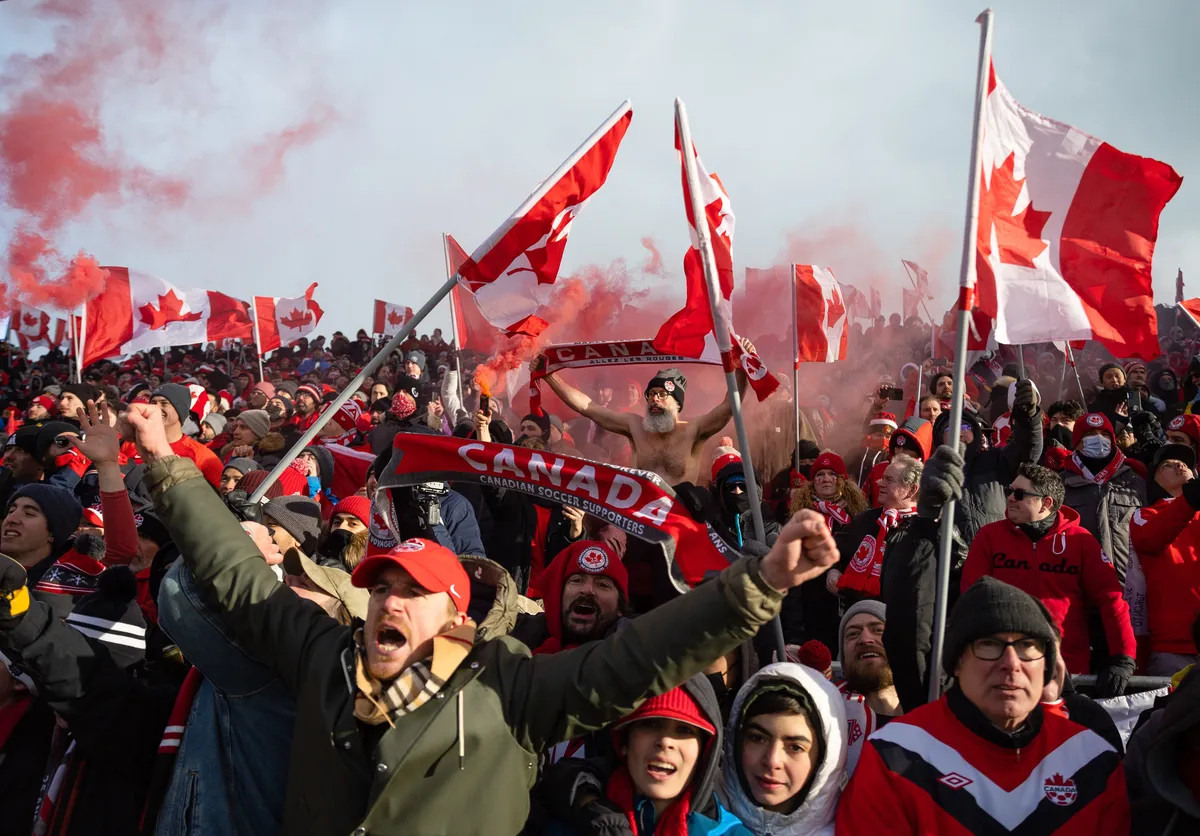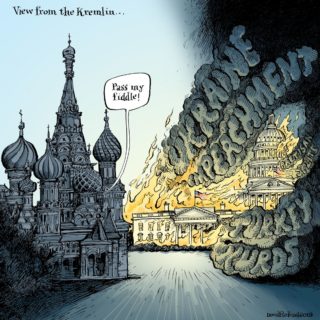
Fans celebrate the Canadian men’s soccer team qualifying for the World Cup. The national team won 4-0 over Jamaica on Sunday at BMO Field in Toronto on March 27, 2022. MELISSA TAIT/THE GLOBE AND MAIL
Fifteen minutes after Canada had advanced to its first men’s World Cup in 36 years was about 15 minutes longer than anyone should have stayed.
With the wind whipping in off Lake Ontario, it felt like -14 at BMO Field. Most of these people had been out in this for hours. This was run-don’t-walk-to-heated-shelter time.
But nobody was moving. Literally.
All 29,000 on hand were still there. All 29,000 were waiting for the team – standing there in shorts – to lead them in the Viking Thunder Clap. As the clap goes on, it gets more intense, until it is eventually a frenzy of applause.
Standing on the field, you got some small sense of what it must be like to be a sports star at the moment of peak achievement. To experience noise washing over you like a physical force. To be fully connected to a crowd that is fully connected to you. To feel part of something enormous, shared and, in this particular instance, totally Canadian.
Canadian soccer has never felt like that on home soil. Until Sunday.
Canada needed to win or draw to qualify for Qatar 2022. Geography sorted that problem out early. The weather beat Jamaica long before kickoff, and then Canada beat it again 4-0.
It was a game so lopsided that long stretches of it occurred in a mournful silence. It’s no fun defeating someone who doesn’t want to be there playing you in the first place.
It wasn’t until the soccer ended that the occasion really began. There were impromptu celebrations followed by a formal celebration. Every single person on the field down to the chief gardener had their name called out for salutations. They had a banner unveiling, fireworks, an a cappella O Canada, video greetings, canned short films, faces from the past. They even unveiled a new slogan – “We CAN.” It’s like “We the North,” only it fits better on a T-shirt.
Whenever Germany or Argentina qualifies for a World Cup, they have a specific term for that – “doing the bare minimum.” But in this country, with this history, the result was mass pandemonium.
“Listen to the country behind us,” midfielder Mark-Anthony Kaye said, pointing up at the frothing stands. “We all won! We all won!”
“A dream come true,” another midfielder, Jonathan Osorio, said. “I don’t know how to explain it.”
As he spoke, Mr. Osorio’s teeth chattered violently from a double whammy of extreme cold and even more extreme emotion.
You couldn’t really hear him as he was talking. The crowd – still standing there after more than a half-hour – was making too much noise.
Players had escaped into the stands. People in the stands had escaped onto the field. Security had stopped trying to sort out the difference. It was a joyous riot.
And you couldn’t help thinking to yourself – for soccer? That’s what, in the end, is getting Canada’s postpandemic band back together?
Twenty years ago, this was a sport for hipsters, and not the good sort. It was a sport for old guys from the old country and pretentious knobs who smirked whenever anyone said “soccer” where they should have said “football.”
Strides have been taken, but they have become great, giant leaps over the past eight months.
First, the women’s team won Olympic gold in Tokyo. Now this.
Qualifying for a World Cup is just one of three major accomplishments by this senior men’s team.
The second is transforming soccer into a winter activity.
Two of the turning-point games of this run were played at home in sub-zero temperatures. In each instance, the crowd was large and boisterous, and the opponent was frozen and worried they might lose toes. Canada won both times.
The third accomplishment is the least likely. In concert with their counterparts on the women’s team, this group made soccer the Canadian national sport.
It may not be the most watched, but it is the one most likely to bring out the harmless nationalist in its fans. Sunday’s crowd came dressed in what might be called Bob and Doug cosplay. Canadian toques. Canadian jerseys. Canadian flags. Any sort of clothing is fine as long as it is only red and/or white and prominently features a Maple Leaf. Flags as capes preferred.
There is an unironic Canadiana on display at soccer matches that you do not see for the other sports, including hockey. It must be something about soccer’s outsider status here in combination with its enormous popularity just about everywhere else. Soccer is for everyone, which makes stamping it with the Maple Leaf seem less like jingoism and more like fun.
Hockey owned this aesthetic until the NHL’s greed and the players’ timidity Olympically screwed it up. These days, the Canadian national men’s hockey team is the Where’s Waldo of popular sports.
The women’s hockey team has its big moment every four years. But in between, they can’t get it together to agree on a professional league that might catch some regular momentum. Hockey is still king and queen, but it’s moving backward.
Canadian basketball seemed bound for glory after the Raptors run in 2019, but it’s the same story. Despite having some of the best players in the world, Canada’s senior men’s team cannot figure out how to get them onto a court together when it matters.
That created a lane for soccer – the fifth of the big-four sports. Eleven guys just ran up the middle of it. So for the next eight months at least, Canada is a soccer nation.
Of course, there is more about going to Qatar than a chance to wave the flag. This team is so young, it doesn’t know what it doesn’t know. That’s a tantalizingly dangerous quality.
But even if they’re just there to wave the flag? Well, on Sunday at least, standing underneath those ovations, that felt like more than enough for right now.
CATHAL KELLY
The Globe and Mail, March 27, 2022

